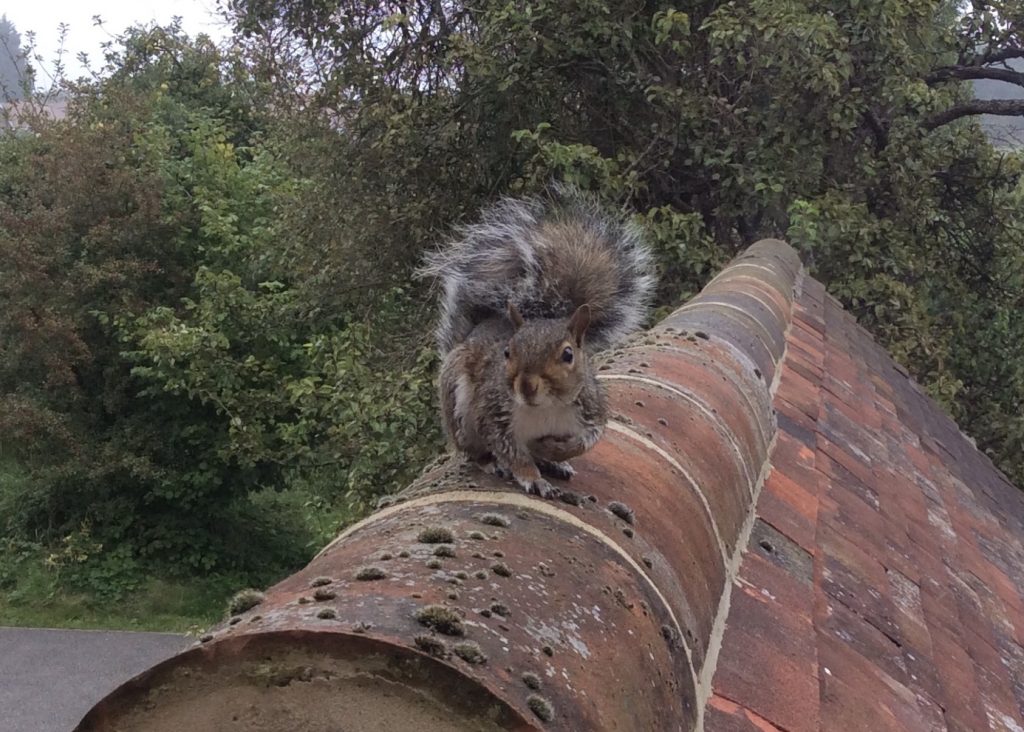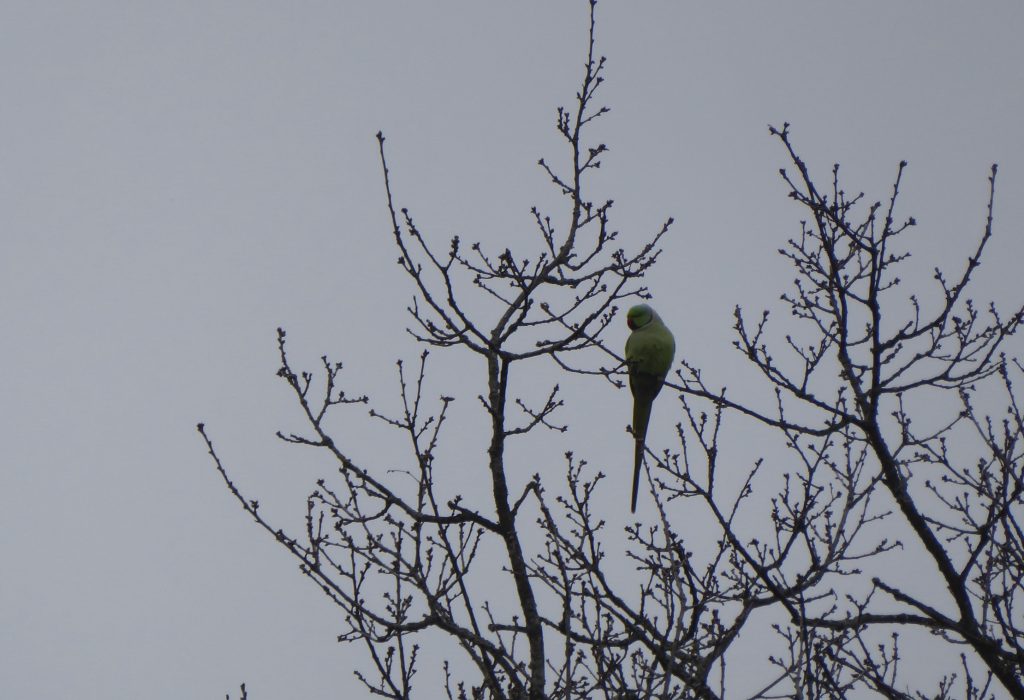All living species are looking for a similar situation in their everyday lives, including us humans, and that is the right balance. I know I personally have to find the right balance to be more productive each day and when I reflect on my days working on various nature reserves, I realise that the work under taken from the site’s management plans, were also seeking to create or recreate the right balance for the species living there.
This is where it starts to get rather interesting and the playing god tag, that many conservationists have been labelled by the non-understanding general public when controversial management takes place, will continue to remain controversial but as I always say with controversial ideas, find out the real facts before passing judgment.
I was reminded of one of the most controversial areas of conservation management recently by news stories in the general press. The stories have told of how two well know species are going to be controlled because of their negative affects upon the habitats they inhabit. The two species are the bright green Ring Necked Parakeets and the bold over familiar Grey Squirrels. Both species are introduced species with the Parakeets originating from India and were a commonly kept pet in this country in the 1950s and 70s from which the now widespread wild UK population originated from.

Grey Squirrels were brought to the UK in the 1890s and are native to North America. They were released at several sites around the country from where they started to spread but the main reason they have spread to so many places around the country is because of human introductions. This is, what I call Victoria vanity introductions, and this continued into the 1930s aiding the spread of the species.
They are a tenacious in their behaviour and adaptability and through my own observations I can understand why there has been a call to control their numbers and again from my own personal observations I can see why there has been a call to control numbers of Ring Necked Parakeets. I am also very aware of the ‘ love of all animals and birds ‘ runs very deep in some of rich comfortable countries around the world and the idea of killing them is an unthinkable thought. As always in our free-thinking world, it is very difficult to please everyone but let’s start at the beginning and look at why some experts are calling for control of these two obvious and some might say characterful species.
Now let’s look at the Ring Necked Parakeets first and as I like to form my opinions from my own observations, my birth place in Kent was not too far away from the established population in Thanet and after childhood holidays and early bird watching expeditions I had watched the noisy parakeets stripping buds off trees, raiding garden fruit trees and competing for nest sites with Stock Doves. Various studies have shown how the Parakeets are responsible for depriving a whole variety of native hole nesting species of potential nest sites. The parakeets are larger and more aggressive than our native woodpeckers, various tit species and Restarts. Several of these species are in long term decline for a whole variety of reasons and competing with Ring Necked Parakeets has increased their decline and added problems to survival prospects in the long term.

In recent years the population of Ring Necked Parakeets has exploded roosts of several thousand have been counted in some London parks and they are quickly spreading across the UK. I have noted their increase locally in recent years and there are regular flocks of 50 plus birds around Guildford these days.
This species has made enemies in the world of farming because of the damage they do to fruit trees and other trees species which has reduced the money made from these crops and its obvious why the cry to control them has come from various people in the farming community. In some parts of the South East of the UK they have begun to nest in buildings often causing significant damage in the process
All in all, they are a troublesome species and they have started to have some serious affect on the UKs wildlife species and in some parts of the country to human lives as well. As usual on the other side of the argument many people, particularly in urban and suburban areas, enjoy the presence of these bright, noisy and intelligent species and help their survival by providing garden feeding stations for them to gain vital strength from. A number of who have already made their fury obvious at the proposal of controlling them recently. At the moment we can only watch this space to see how this story progresses.
The spread of Grey Squirrels has been well documented and the threats to native Red Squirrels has also been studied very well and having been present in this country for 120 years, the results of the presence of Grey Squirrels is very obvious. The Greys are larger and more aggressive than native Reds and have out competed them in food and nesting sites. Studies have shown that where Grey Squirrels have occurred in existing Red Squirrel populations the Reds will die out in a short space of time and have also carried a virus known as squirrel pox which kills the Reds but the Greys recover from. They are a very serious threat to Red Squirrel survival and whilst I worked in Northern Ireland, I worked at several sites where Red Squirrels were present and were only surviving because Grey Squirrels were controlled/removed. As well as the obvious problem with our native wildlife, this species has also had a major impact on all of the bio diversity of habitats where they occur which has also started to include us humans, which sometimes make me feel like the natural world is saying to us humans ‘ I told you about upsetting the balance ‘.
One of my first conservation jobs was working at a field study centre on a working farm in the West of Kent. My first weeks of work were quite dramatic as they occurred just after the big storm of October 1987. The farm had quite large areas of native deciduous woodland. There were also a few pine plantations and most of these were flattened by the storm. Some of the old plantations were cleared and re planted with Oak and Cherry trees as part of the first wave of replanting deciduous trees as opposed to alien softwood species that had happened widely across the country after the second World War. I helped plant some of these new plantations and can remember thinking about how the area would look in 20 or 30 years time. I didn’t have to wait that long as by the first spring after planting all the emerging buds and shoots had been eaten by Grey Squirrels and another non-native species that was present on the farm and that was Sika Deer that had been introduced back in the 1970s. I actually witnessed the Squirrels on the tree tubes jumping from one to another and chewing the buds and shoots. This kind of behaviour make Grey Squirrels very unpopular and if you add to that, stripping of tree bark, killing nestling and adult songbirds, digging up gardens, stealing of bird food, disturbing & killing Dormice and moving into your loft for the winter you may be able to understand why conservationists have called for control of this controversial species.
As both of the species I have talked about so far are introductions from abroad; you can see the common link. This is a far too frequent situation that has occurred for a long time and on a large scale since the Victorian era in the UK and many of these alien species have had a very negative effect on the native species in similar ways to Grey Squirrels and Ring Necked Parakeets.
Another major problem that has occurred within the same timescale of most of these introduced species, is the loss of natural or more traditional habitats. These two facts are never going to be very helpful in increasing natural bio-diversity and will do the exactly the opposite as we can see from the losses we have seen in the last 3 centuries. Some of the statistics are truly frightening with the 97% loss, in the last 100 years, of wildflower grassland being a prime example of habitat loss. It’s no wonder our natural bio-diversity has been reduced by so much.
